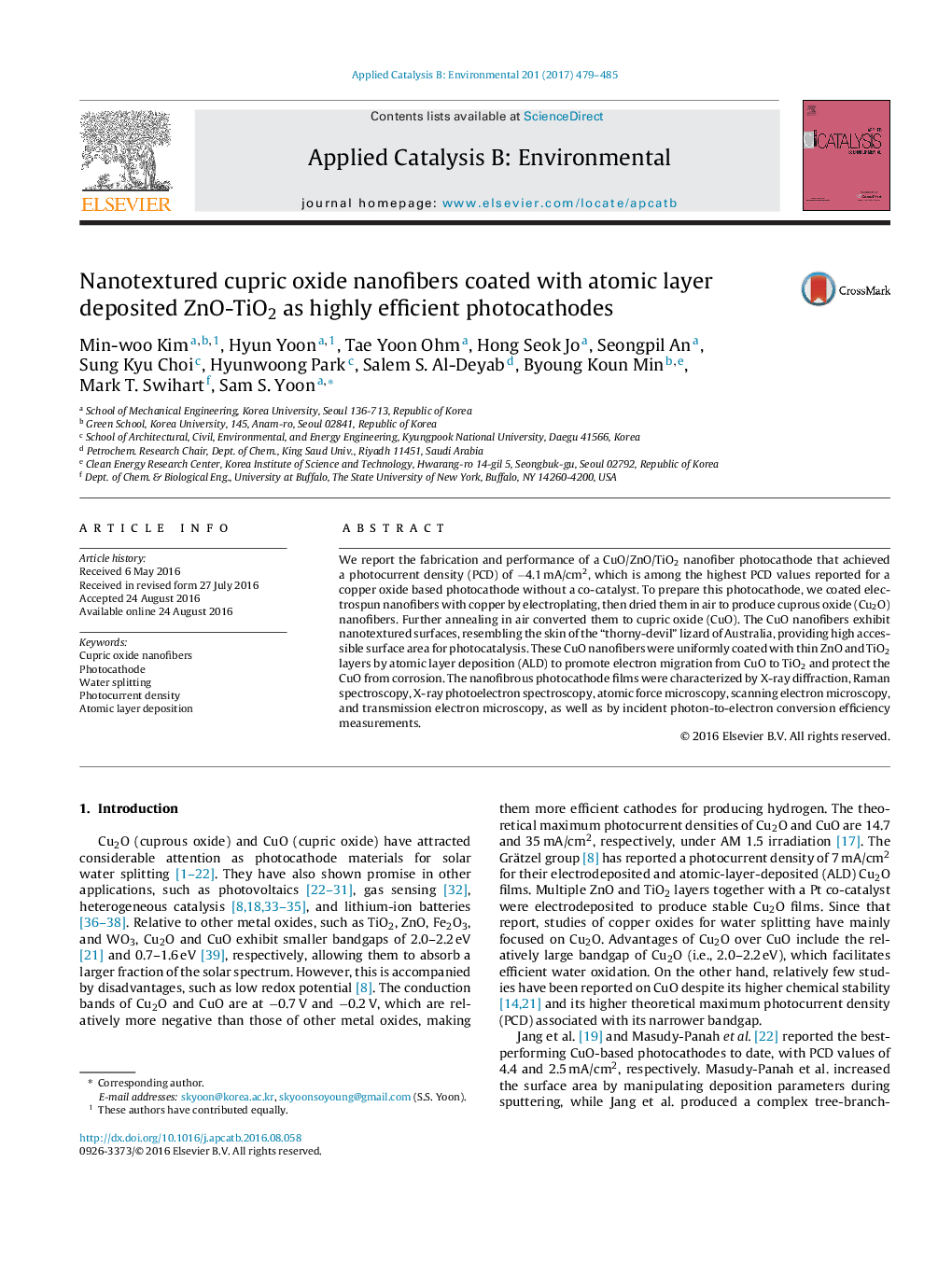| Article ID | Journal | Published Year | Pages | File Type |
|---|---|---|---|---|
| 6455045 | Applied Catalysis B: Environmental | 2017 | 7 Pages |
â¢The fabrication of a CuO/ZnO/TiO2 nanofiber photocathode has been reported.â¢We achieved a photocurrent density (PCD) of â4.1 mA/cm2 without a co-catalyst.â¢Electrospun nanofibers were electroplated with copper and then air-dried and annealed.â¢The cupric CuO nanofibers exhibited nanotextured surfaces.â¢These CuO nanofibers were coated with ZnO and TiO2 by atomic layer deposition.
We report the fabrication and performance of a CuO/ZnO/TiO2 nanofiber photocathode that achieved a photocurrent density (PCD) of â4.1Â mA/cm2, which is among the highest PCD values reported for a copper oxide based photocathode without a co-catalyst. To prepare this photocathode, we coated electrospun nanofibers with copper by electroplating, then dried them in air to produce cuprous oxide (Cu2O) nanofibers. Further annealing in air converted them to cupric oxide (CuO). The CuO nanofibers exhibit nanotextured surfaces, resembling the skin of the “thorny-devil” lizard of Australia, providing high accessible surface area for photocatalysis. These CuO nanofibers were uniformly coated with thin ZnO and TiO2 layers by atomic layer deposition (ALD) to promote electron migration from CuO to TiO2 and protect the CuO from corrosion. The nanofibrous photocathode films were characterized by X-ray diffraction, Raman spectroscopy, X-ray photoelectron spectroscopy, atomic force microscopy, scanning electron microscopy, and transmission electron microscopy, as well as by incident photon-to-electron conversion efficiency measurements.
Graphical abstractDownload high-res image (249KB)Download full-size image
